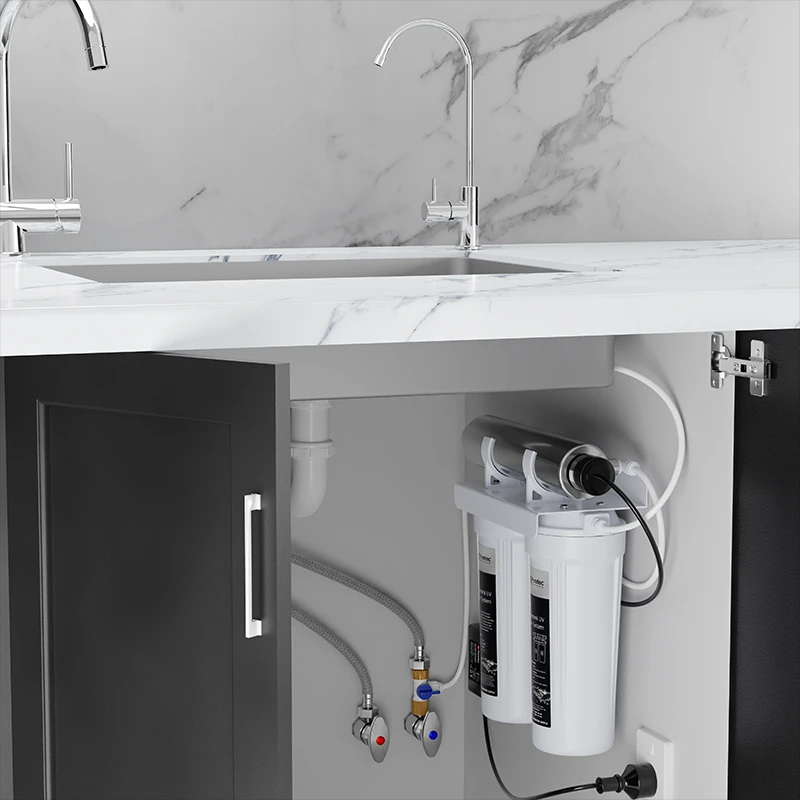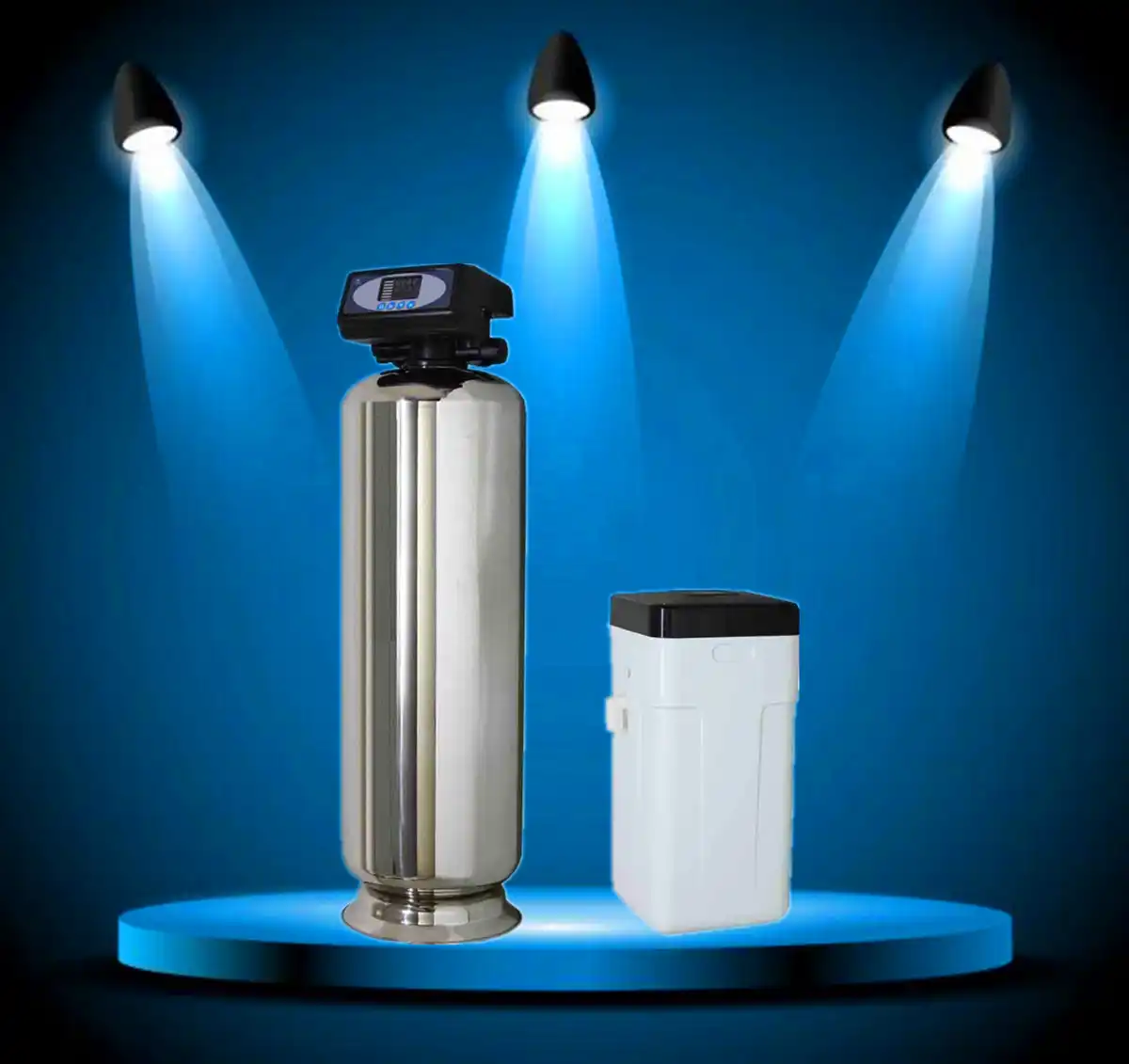Among household appliances, the water purifier plays a remarkably unassuming yet vital role. Day in, day out, it filters out impurities and unpleasant odours from our water, providing us with clean, sweet-tasting drinking water. Over time, it becomes like an old friend, quietly safeguarding the whole family. Yet when it malfunctions, many people panic instantly, unsure whether to call a technician or attempt repairs themselves. In truth, some issues are not complicated at all. With just a little know-how, you can save considerable time and expense while also extending its lifespan.

A common occurrence is a gradual decrease in water flow. where users recall a brisk flow upon purchase, only to find cups filling at a snail's pace later. Often, this isn't a machine failure but a clogged filter cartridge. This becomes more pronounced in households with high water usage or where tap water contains significant impurities.
The solution typically involves inspecting the cartridge's condition. If noticeable discolouration or blackening is observed, replace it promptly. There's no need to feel frugal about this, as delaying replacement places greater strain on the entire unit.
Another exasperating issue is when the purifier suddenly emits strange noises, such as gurgling bubbles or a humming vibration. Generally, if the sound isn't constant but occurs after switching on or first use, it's likely air trapped in the pipes.
In this case, disconnect the inlet and outlet hoses, reattach them, and release a small amount of water to expel the air. However, if the noise is accompanied by vibration and persists for an extended period, it may indicate an issue with the internal booster pump. In such cases, inspect for loose casings, improperly secured pipe clips, or deformed mounting brackets.
Beyond noise, water leaks from the purifier must not be ignored. Minor leaks escalating into major ones not only waste water but may seep into cabinets or cause moisture damage to adjacent appliances. Most leaks occur at joint connections or filter housing interfaces.
Wrap a paper towel around the suspected area for several minutes to detect moisture marks. If a leak is confirmed, first attempt to tighten the joint. Should the rubber seal be aged or cracked, replace it promptly to prevent worsening leaks. Manufacturers typically supply genuine replacement parts matching the model, readily available online.

Some users report that purified water retains an off-odour – sometimes earthy, sometimes plastic-like. This is often linked to the activated carbon filter becoming ineffective, or bacteria developing on the filter surface due to prolonged lack of flushing. Therefore, regardless of usage frequency, it is advisable to perform a thorough flush periodically. Dispose of used filters according to the manual's instructions, and ensure new filters are flushed for several minutes before use. This ensures both safety and peace of mind when consuming the water.
That said, safety must be prioritised during maintenance procedures. Essential preparatory steps like disconnecting the power supply and closing valves are often overlooked due to perceived inconvenience, leading to incidents such as being doused with water during disassembly or even causing electrical short circuits. Furthermore, advanced models feature intricate internal circuitry; attempting unauthorised disassembly is inadvisable. Instead, contact professional after-sales support to assess whether circuit boards or sensors are faulty, thereby preventing further damage.
To minimise such issues, routine maintenance is equally crucial. Position the unit away from heat sources and direct sunlight, as elevated temperatures accelerate the ageing of internal plastic components. Conduct a comprehensive inspection every six months as per the manual. Should excessive sediment build-up be detected in the pipes, schedule a thorough cleaning. While this step may seem time-consuming, it prevents costly repairs down the line and reduces the hassle of frequent unexpected incidents.
Mastering these fundamental techniques will reveal that many minor faults previously requiring professional intervention can be resolved independently. This not only saves costs but also deepens your understanding of your equipment's operation, preventing panic during future similar incidents. Naturally, should you encounter severe issues or uncertain causes, avoid attempting disassembly. Steer clear of advertisements promising ‘permanent, dirt-cheap repairs’ – such traps are best avoided. As these appliances directly impact drinking water safety, prioritise peace of mind and security over potential risks. Engage qualified professionals to handle repairs, ensuring reliability comes before cost-saving.
In daily life, even a modest water purifier, when properly observed and maintained, can quietly accompany you through the changing seasons, delivering clean, healthy water with every sip. The extended lifespan gained through diligent care transforms into one of life's most subtle yet profoundly satisfying comforts.

 Reverse Osmosis Technology for Wastewater Treatment: Understanding How RO Systems Operate
Reverse Osmosis Technology for Wastewater Treatment: Understanding How RO Systems Operate
 The “Magic” of Turning Seawater into Freshwater: Unveiling the Core Secrets of Reverse Osmosis Technology
The “Magic” of Turning Seawater into Freshwater: Unveiling the Core Secrets of Reverse Osmosis Technology
 How to Choose Reliable Central Water Filtration and Water Softening Systems? Most People Get It Wrong!
How to Choose Reliable Central Water Filtration and Water Softening Systems? Most People Get It Wrong!
 In rural areas, where groundwater from wells is the primary water source, is it truly necessary to install water purification equipment?
In rural areas, where groundwater from wells is the primary water source, is it truly necessary to install water purification equipment?